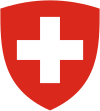This article includes a list of references, related reading, or external links, but its sources remain unclear because it lacks inline citations .(November 2024) |
| This article is part of a series on the |
 |
|---|
This is a list of cantonal legislatures of Switzerland. Each canton has a democratically elected cantonal legislature, as well as elected members of the Federal Assembly. The cantonal legislatures are elected for four years, except in Fribourg, Vaud, Geneva and Jura, which elect their legislatures for five years.
Contents
The largest legislature, in Zürich, has 180 members, whilst the smallest, in less-populous Appenzell Innerrhoden, has only 49 members. Appenzell Innerrhoden is also the only legislature that is non-partisan. All other legislatures operate party political systems. The Swiss People's Party (SVP/UDC) is the largest party in nine legislatures, The Centre (DM/LC) is the largest in eight, the FDP.The Liberals (FDP/PLR) is the largest in seven and the Social Democratic Party (SP/PS) is the largest in one.
Two cantons, Appenzell Innerrhoden and Glarus, hold Landsgemeinden as their highest legislative body. Under this system, a form of direct democracy, all adult citizens may attend an annual general assembly, where they may vote on laws. A permanent legislature also sits more frequently, but sovereignty resides with the Landsgemeinden. For the purpose of this article, the permanent legislature is considered the cantonal legislature.
